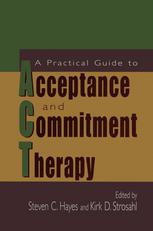

Most ebook files are in PDF format, so you can easily read them using various software such as Foxit Reader or directly on the Google Chrome browser.
Some ebook files are released by publishers in other formats such as .awz, .mobi, .epub, .fb2, etc. You may need to install specific software to read these formats on mobile/PC, such as Calibre.
Please read the tutorial at this link: https://ebookbell.com/faq
We offer FREE conversion to the popular formats you request; however, this may take some time. Therefore, right after payment, please email us, and we will try to provide the service as quickly as possible.
For some exceptional file formats or broken links (if any), please refrain from opening any disputes. Instead, email us first, and we will try to assist within a maximum of 6 hours.
EbookBell Team

4.0
6 reviewsLong awaited, here is the first book to apply the Acceptance and Commitment Therapy (ACT) model and its powerful techniques to a broad range of disorders and clinical settings. An innovative and groundbreaking approach, ACT cuts across the traditional categories of experiential, analytic, behavioral and cognitive therapies to utilize concepts of mindfulness and acceptance and the view that language is at the core of many psychological disorders. With the help of 26 expert contributors, ACT architects Hayes and Strosahl have expanded on their previous texts to give readers an elegant source of ideas for using this language/cognition-based method.
• A concise overview of the theory, core processes, and key therapeutic messages of ACT, plus a framework for case conceptualization using ACT.
• Techniques for using ACT to treat common behavior problems, including affective disorders, anxiety disorders, PTSD, and substance abuse/addiction. Chapters are included on clients with multiple problems and the severely mentally ill.
• Uses of ACT for stress relief, for chronic pain management, and in inpatient medical settings.
• Special chapters on children and families, and ACT with groups.
Modeling the psychological flexibility that is so crucial to treatment, chapters illustrate ACT’s adaptability to client problems as they arise, and its built-in strategies for cutting through impasses. Further, the book cogently differentiates ACT from related modes of therapy.
This user-friendly volume will be a welcome guide for practitioners and students alike. It offers both a cogent theoretical model and a clinical guide for all professionals who treat mental health problems, regardless of theoretical orientation.